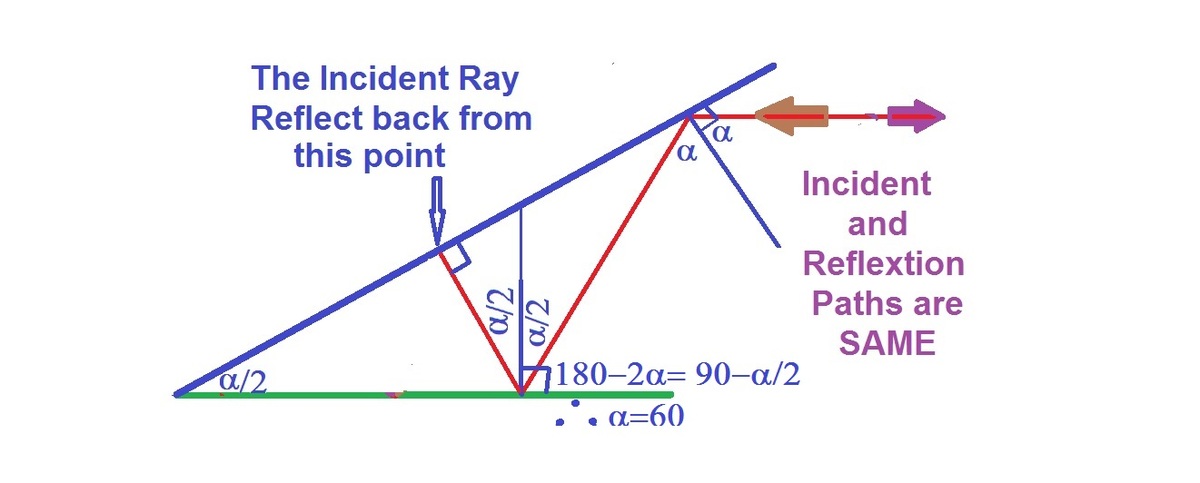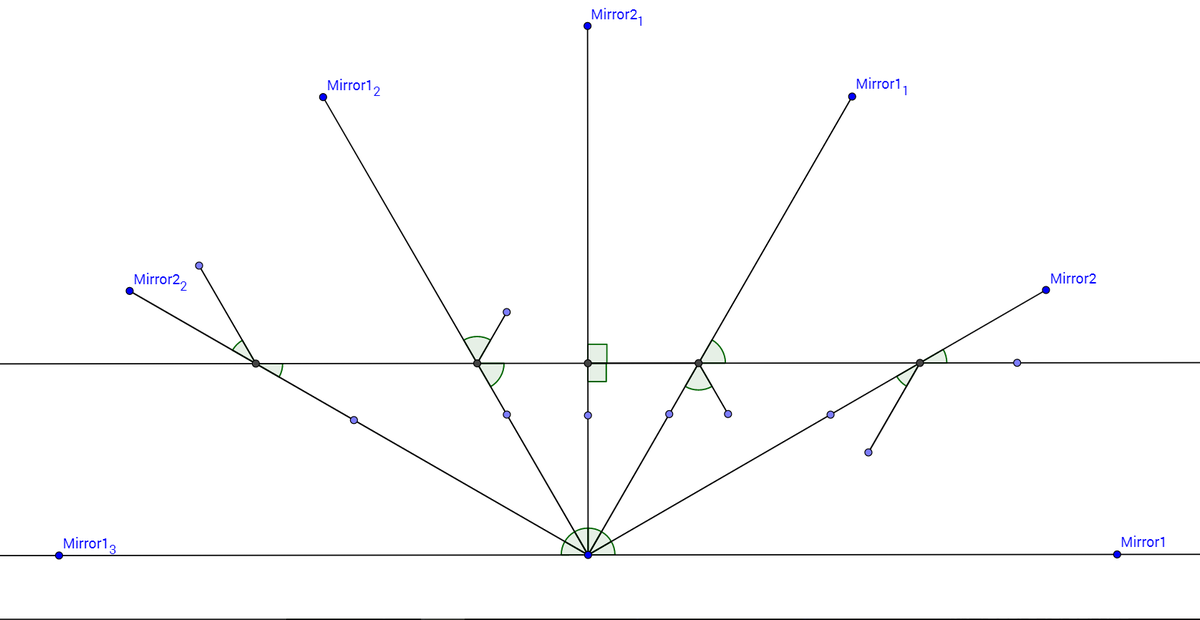Multiple Reflections With Inclined Mirrors
The angle between two mirrors is θ . If the incident ray that is parallel to mirror 1 is reflected 5 times in the setup, and becomes parallel to mirror 1 again. What is the measure (in degrees) of θ ?
The answer is 30.
This section requires Javascript.
You are seeing this because something didn't load right. We suggest you, (a) try
refreshing the page, (b) enabling javascript if it is disabled on your browser and,
finally, (c)
loading the
non-javascript version of this page
. We're sorry about the hassle.
5 solutions
Total deviation is 180+ theta how can it identify
@Madhuri: I've drawn a diagram which traces the exact path of the ray and explains the solution much better but I do not know how to upload the diagram. If you would write to me at [email protected], I can forward it to you.

For Incident and Reflection angles to be equal, the condition can only be met for five reflection if there is a symmetry. And that means after third reflation the ray would trance back the same path. That means second reflection on m-2 must be at 90 degrees. If you draw the ray diagram you would see that the other two angles are Alpha/2 and Alpha = 90. Hence Alpha/2 = 30 .
thus.. there will be no two different parallel rays... the given pic is not realistic.
thita=pi/n+1 (where n is no. of refections) here n=5 so thita = 180/5+1=30.
Please correct the typo. n + 1 π = 5 + 1 1 8 0 = 3 0 .
What is this formula about can u elaborate ?
Here is a really nice way of thinking of the reflections.

From here it is obvious that θ = 1 8 0 / 6 = 3 0 ∘
An explanation I found elsewhere:
https://socratic.org/questions/two-plane-mirrors-are-included-at-an-angle-theta-as-shown-in-the-figure-light-ra
Total Deviation = 360 - 5(θ) which in this case =180 + θ or 6θ=180° or θ=30°